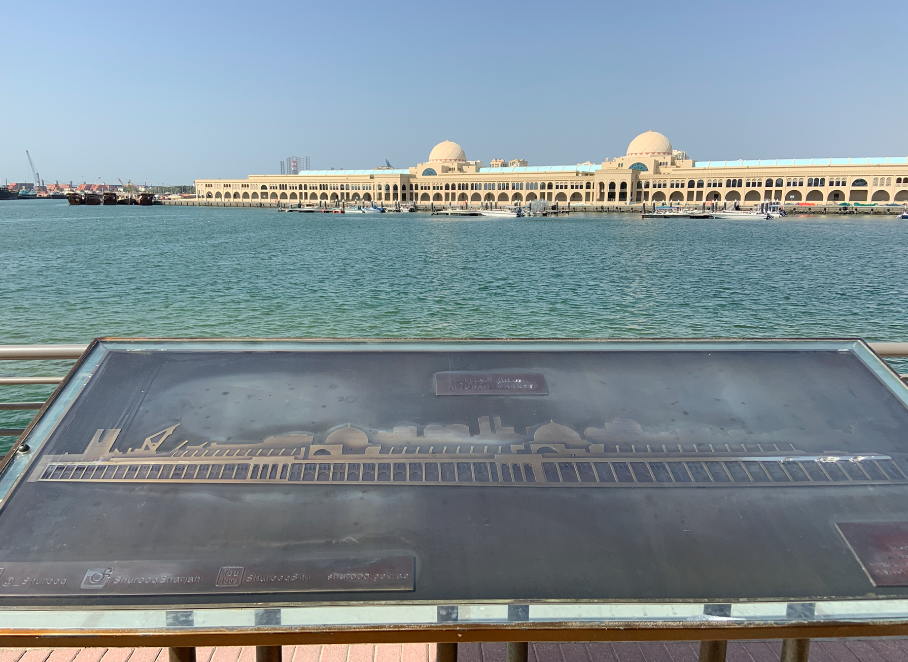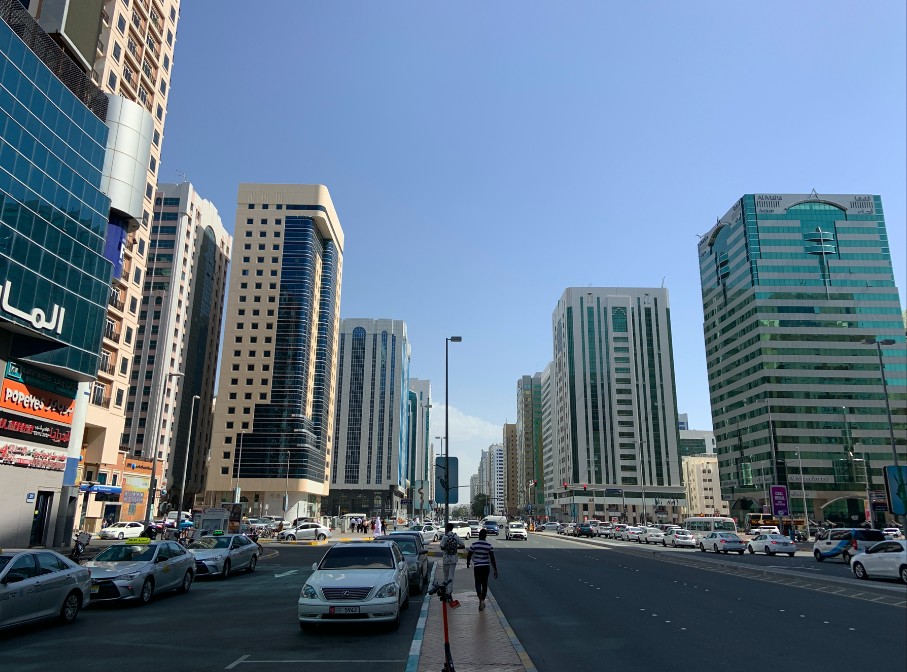
While Dubai is all about flashy tall buildings and shop-till-you-drop malls, neighbouring Sharjah takes a more subtle approach, forgoing glitz to concentrate on culture and history. Some travellers are put off by its conservative reputation (the emirate is ‘dry’; no alcohol is available anywhere), but if you can handle a day or two without a beer, Sharjah is home to some of the best museums and art galleries in the country: the restored Sharjah Heritage Area and the mind-bogglingly vast history of the Mleiha Archaeological Site. This emirate is doing more than anywhere else in the UAE to preserve its heritage – explaining why Unesco declared it Cultural Capital of the Arab World in 1998, recognition reaffirmed in 2014, when it became Capital of Islamic Culture.

Sharjah is located only one hour away from Dubai, but the city landscape does not differ much. Since I only had limited time in this emirate, I stopped by Flag Island for a relaxing afternoon.

Sharjah is considered to be one of the patrons of culture, art and education in the United Arab Emirates. The third largest emirate, with two coastlines on the Arabian Gulf and the Indian Ocean, it is a meeting point for trade, cultural exchange and commerce.

Across the island lies many government buildings, such as the Sharjah Electricity and Water Authority, Department of Town Planning and Survey, Petroleum Council etc. This long stretch of brown building is actually the Central Souq, divided into three sections, fruits & vegetables, fish, meat. It is a place for locals to get their daily necessities and also for tourists to have a glimpse of the daily marketing lives. Souq Al Jubail has been established as a state-of-the-art conventional market that is blended with the Emirate’s Islamic architect identity, with its strategic location overlooking Sharjah Corniche and the iconic Flag Island.
The Flag Island is one of the three islands on the Khalid Lagoon, which is connected by two motorized bridges to the mainland of Sharjah. While much of the island is occupied by Al Montazah Parks, the other part has a huge UAE flagpole, which is the largest in the country and serves as a good photo-op. The flagpole at the Flag Island was the 7th tallest in the world at the opening date on 2nd of December 2012 and crowned with 15 x 30 metres flag.

The island has a nice garden and a small amphitheatre for cultural performances. There is also a cafe with a children’s play area and an art space. One can spend around 45 minutes to an hour here. Entry is free.

The Flag Island is designed to be a new attraction, turning the island into a new touristic destination featuring varied recreational facilities including an open-air amphitheatre that accommodate 1000-person, 1971- Design Space and Jones the Grocer restaurant. However, due to the covid-19 situation when I traveled, the restaurant and children’s play area were closed.

Across the Flag Island, there is another attraction which is the Al Montazah Parks, which is home to Pearls Kingdom and Island of Legends.

At the Pearls Kingdom, explore an ancient and legendary kingdom that has been inspired by the pearl of knowledge. This water theme park is your portal into another world, where magic carpets carry you over city ruins in your search for hidden treasures. Pirates, giant guards, a phoenix, the pearl princess… your experience at Pearls Kingdom will be one of the most exciting days ever.


Over at Island of Legends, one can travel back in time to the 18th century, to an exciting age of inspiration and invention. It ushers you into a steam-powered era, filled with iconic inventions that would change the world forever. The stories and legends will take you on a journey through nine different nations.

For those in search of historical heritage, do check out the Sharjah Fort. A row of cannons welcomes visitors to Sharjah’s beautifully renovated 1823 fort (hisn), which reopened as a museum in 2015. Once through its mighty teak gate, the series of rooms contain well-presented exhibits on Sharjah’s ruling Qasimi family and the history of the building itself. In the basement is the round prison tower, the old medbasa (a room used for making date molasses) and fascinating information panels on the destruction of the fort in 1969 and its restoration in the 1990s.

Even though Sharjah pales in comparison to its larger brothers Dubai and Abu Dhabi, but do stop over in this emirate to have a feel of the place and check out some unique attractions.


